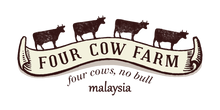
Have you ever looked at an ingredient list and wondered what actually goes into the skincare you’re buying? Learning to decipher ingredients can tell you exactly what goes into your skincare. Instead of relying on what a brand tells you, a quick read will reveal whether your money’s actually going into the ingredients or the marketing!
Here’s a list of ingredients found in a popular brand’s baby wash:

Quick tip! The first 3-4 ingredients in the list usually contains over 95% of what’s in the bottle! In this case: water, sodium coco sulphate, decyl glucoside and coco glucoside. Besides water, the other three are synthetic detergents, used because of their powerful foam-boosting capabilities (since many people wrongly think foam = clean). Purchased in powder or liquid form, they are simply dissolved in water to create a liquid wash.
Since sodium lauryl sulphate (or SLS) has acquired a deservedly negative reputation (they were originally created for industrial use), brands are turning to other forms of sulphates; sodium coco-sulphate in this case to avoid those negative comparisons. Glucosides are milder synthetic detergents and are now used by many ‘natural’ brands alongside sulphates as they are less harsh. What most customers don’t realise is that all these glucosides and sulphates come from the exact same raw ingredient - coconut oil! ‘Coco’, ‘lauryl’, ‘decyl’, ‘caprylyl’ and ‘capryl’ all refer to processed byproducts of coconut oil. Natural though their origins may be, these detergent ingredients are highly processed (as opposed to naturally derived) and their use in commercial skincare is what makes most ‘natural’ shampoos and washes still very harsh.
The rest of the ingredients are a mix of more detergent ingredients (sodium lauroamphoacetate), thickeners (xanthum gum), moisturisers (glycerin & dicaprylyl ether, needed because the detergent ingredients would be too harsh on the skin on their own), emulsifiers (glyceryl oleate), pH modifiers (citric acid, which can come from natural or synthetic sources) and preservatives/fungicides/bactericides (benzyl alcohol, dehydroacetic acid and parfum - yes, perfume and essential oils are often used in high quantities as they act to preserve the product, which is why we always advise customers to go with their noses - fragrance = avoid!).
Now, here’s another list of ingredients. You might be shocked when you find out what product this comes from :)

Look familiar? Other than lauramine oxide (a different detergent ingredient, though ‘laura’ refers to ‘lauryldimethylamine’ which though not quite as catchy - remember the list above? - hints at its origins) and ammonium chloride (a thickener and fragrance ingredient), most of the other ingredients are very much the same.
The kicker? This listing of ingredients comes from a dishwashing liquid, which costs roughly a fifth of what the baby wash costs.
Ingredient list reading - it’s an eye-opening, addictive habit! So, why not give it a go at home and see if you can decipher what goes into the products you’ve been buying. Are you paying for what goes into the bottle or what goes outside it?
